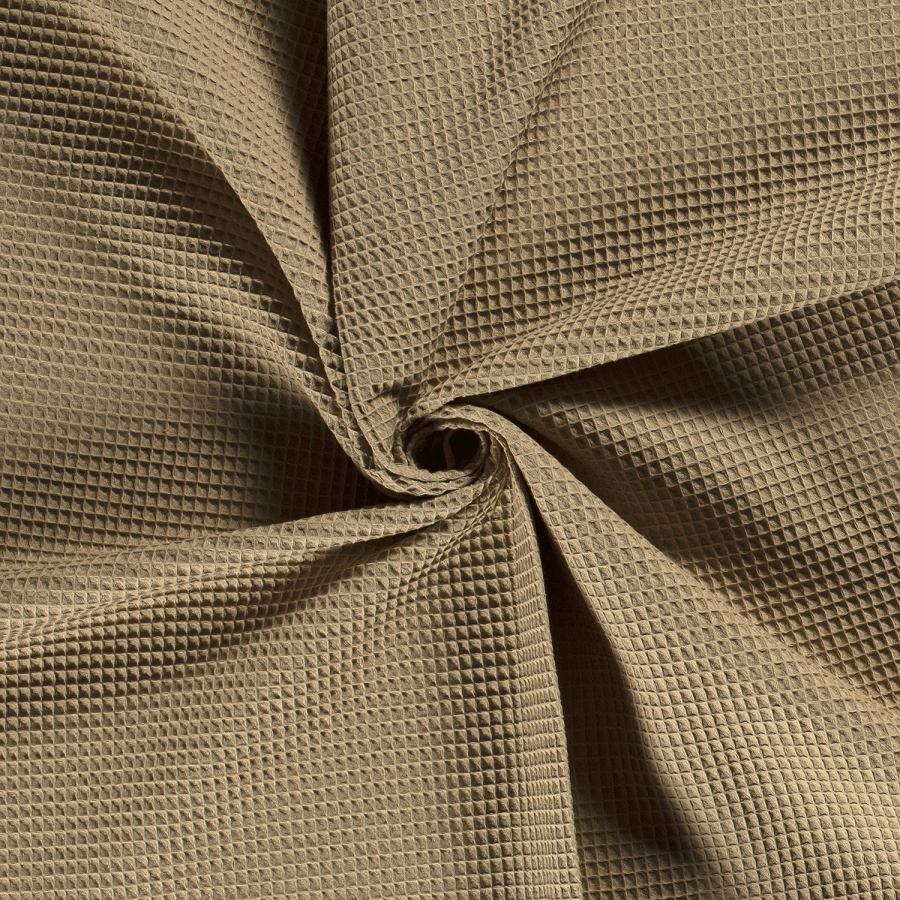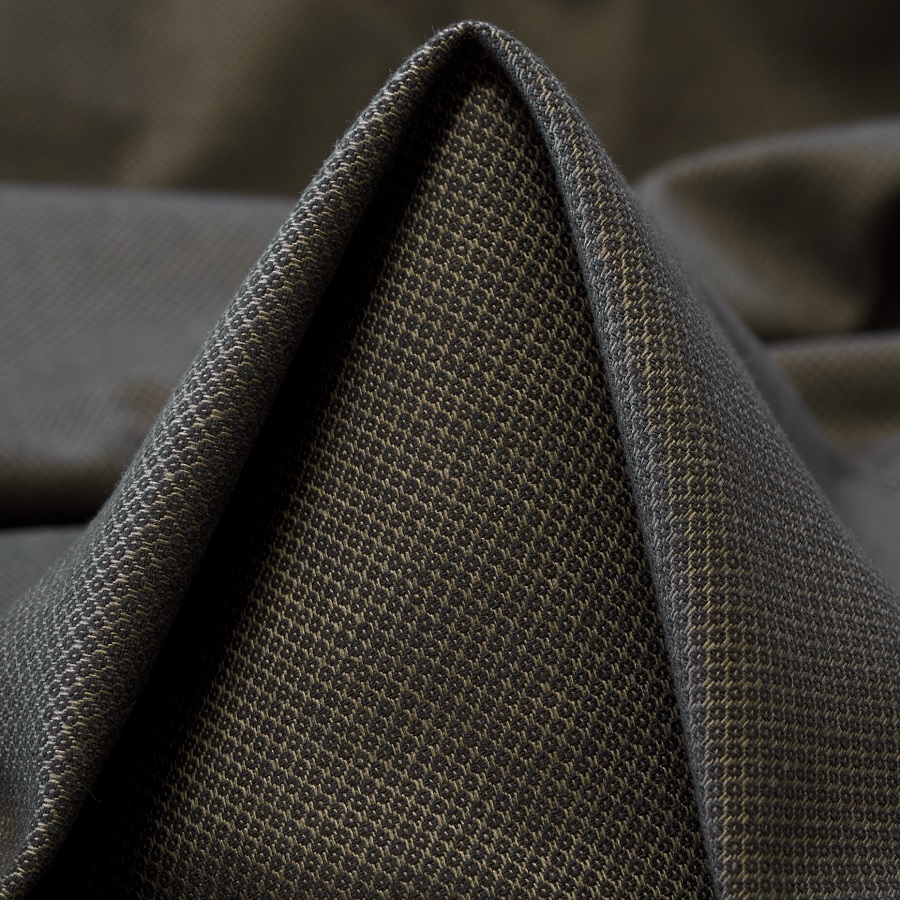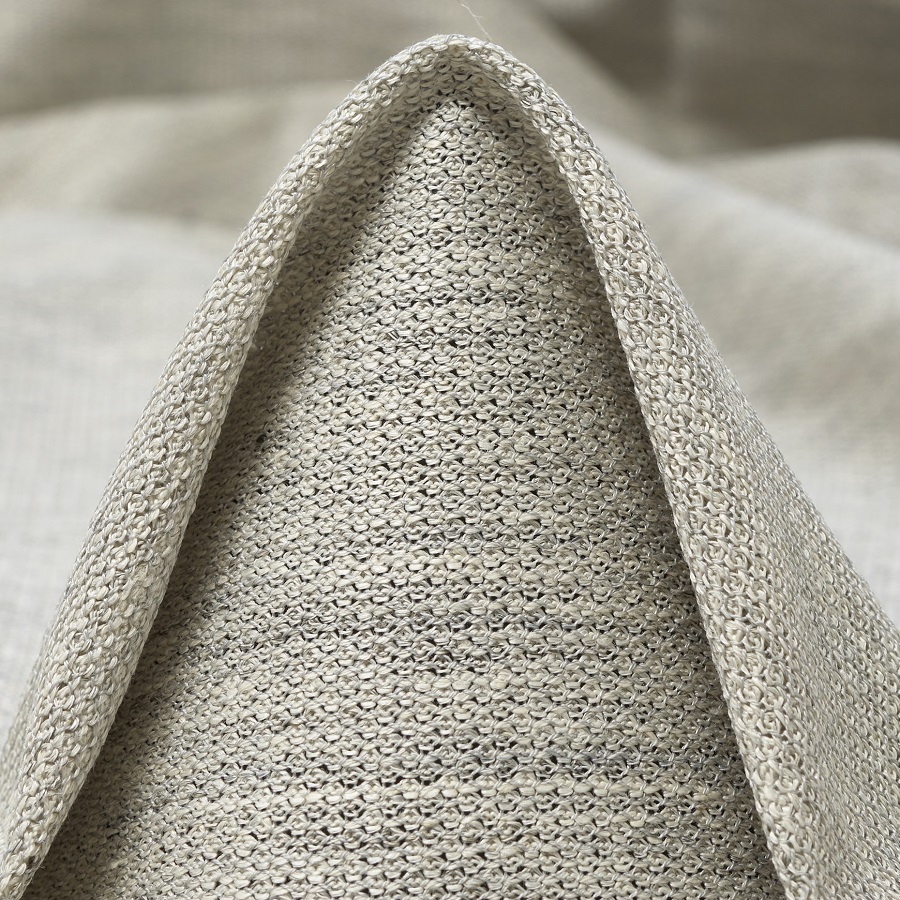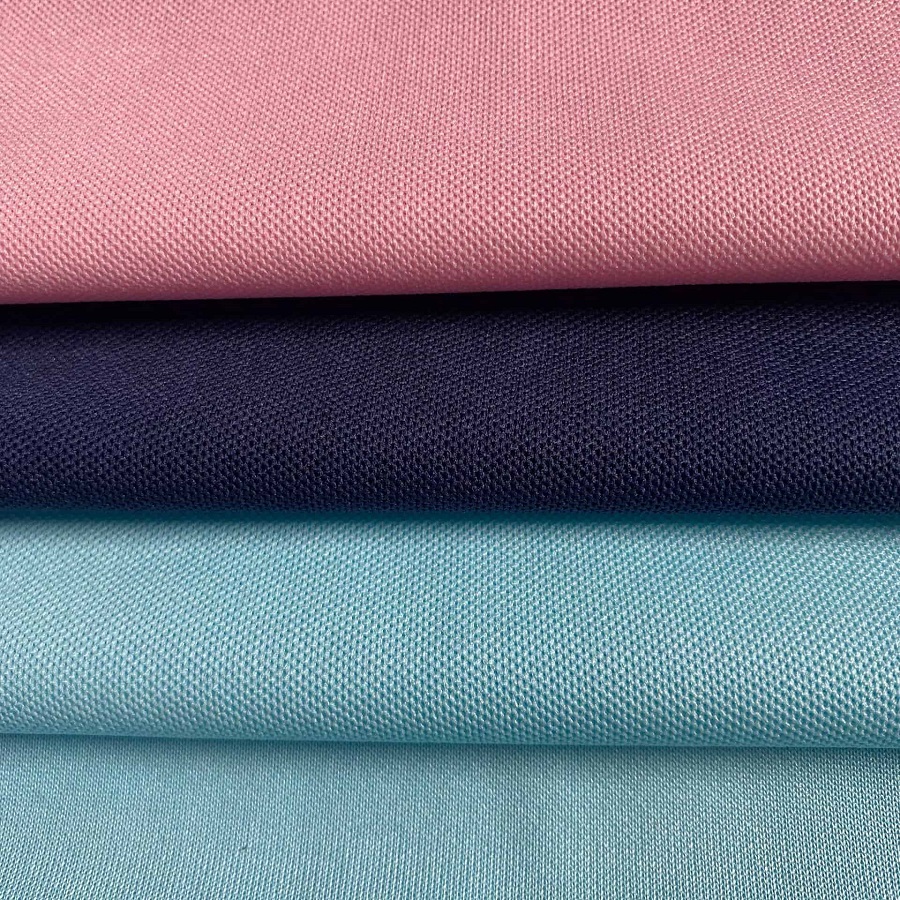Introduction to Pique Fabric
When pondering over the phrase ‘pique fabric,’ some may draw a blank. However, this textile holds a prominent place in the realm of fashion due to its distinct texture and versatility. Tailored from a weaving style that boasts a history extending to the 18th century, pique, or ‘Marcella,’ as it’s also known, is characterized by an intricate geometric pattern that offers a waffled appearance. This traditional weave is primarily associated with cotton but can incorporate polyester for increased durability.
The texture of pique is its standout feature, offering not only a subtle elegance up close but also functional benefits. It’s inherently breathable, a quality that makes it ideal for active wear and formal attire alike. Apparel made from pique offers comfort and airiness, ensuring the wearer stays cool. This fabric is also notably durable, a trait that lends itself to a variety of applications, from sportswear to sophisticated event attire.
Beyond its tactile qualities, pique fabric brings a discreet yet stylish pattern to garments. This has established it as a chosen fabric for polo shirts, a staple in both casual and semi-formal wardrobes, as well as more refined apparel such as tuxedo shirts and evening wear. It is this adaptability that underlines pique’s significance in the fashion industry: whether for a casual brunch or a plush white-tie affair, pique fabric can be tailored to fit the occasion seamlessly.

Historical Background of Pique
The story of pique fabric unfolds in the heart of the 18th century. Born in the Lancashire cotton fields, pique began as a weaving marvel, distinguished by its double cloth and corded texture. Initially, it was a humble imitation of Marseille’s corded quilts. Over time, pique evolved, emerging as a men’s fashion cornerstone by the 20th century.
This fabric, also called Marcella, etched its unique texture into the annals of sartorial history. Handling the fabric, one notices its raised cords and fine ribbing, a testament to its complex weave. From its inception, pique’s intricate design was more than mere aesthetic—it was about practical elegance. Its texture, though subtle, became a symbol of refinement when observed up close.
As fashion trends ebbed and flowed, pique’s prominence did not wane. It adeptly transitioned from formalwear to sportswear, becoming synonymous with polo shirts and white tie event attire. The fabric’s versatility is undeniable, as seen through its journey from linen imitations to a mainstay of high-class events.
Pique’s manufacturing process, which birthed these durable and breathable garments, remains integral to its identity. Even today, the fabric’s origins are honored as it continues to be a staple in sophisticated and sporty styles alike.
The durability and comfort of pique fabric now marry functionality with fashion, affirming its place as an enduring textile choice. With a tale woven through centuries, pique fabric holds a treasured spot in the rich tapestry of fashion history.

Key Characteristics of Pique Fabric
Pique fabric, commonly known as Marcella, boasts a unique set of traits. Its texture features raised cords and fine ribbing, creating a subtle yet distinguishing pattern. This pattern, resembling a honeycomb or waffle, only shows its detail upon close inspection.
The chief allure of pique is its breathability and durability, essential qualities for both active wear and formal attire. The fabric’s airy nature makes it an excellent choice for sporting events or warm weather, helping to regulate body temperature and wick away moisture. This ensures a feeling of coolness and dryness, even during physical activity or in hot climates.
Additionally, pique is noted for its versatility. It can be woven into a variety of textures and patterns, such as waffle, cord structure, or birdseye designs. These varying textures are produced through slight alterations in the manufacturing process, each lending a unique depth to the initial pique design.
The robust nature of pique fabric also contributes to its appeal. It resists wear and tear, making it a reliable option for frequented articles of clothing, like polo shirts. Furthermore, pique’s textured weave helps to conceal perspiration marks, an advantageous trait for both active lifestyles and formal gatherings.
Pique’s qualities extend to care and maintenance as well. The material is generally easy to look after, withstanding regular washing without losing its characteristic texture or comfort. Its excellent ‘give’ – or elasticity – provides added comfort, ensuring that garments retain their shape and fit over time.
In sum, pique fabric stands out for its breathable, durable, and easy-care nature, coupled with a textured pattern that adds sophistication to any garment.
The Versatile Uses of Pique Material
The versatility of pique fabric, also widely recognized as Marcella, defines its broad application across different clothing items and fashion accessories. This unique material is favored for its ability to bring together comfort, style, and practicality. Here are some of the most common ways pique is employed in the fashion world:
- Polo Shirts: Pique is almost synonymous with the classic polo shirt. Its breathable nature and comfortable texture make it a favorite for sports and casual wear. The material’s ability to wick moisture ensures coolness throughout rigorous activities or high temperatures.
- Sportswear: Beyond polo shirts, pique serves well in other sports apparel, such as tennis and golf attire. Its durability withstands the demands of physical activity, maintaining both form and function.
- Formal Shirts: Pique also takes center stage in formal fashion. It is a top choice for dress shirts tailored for white-tie events. The fabric’s subtle texture adds an element of interest to elegant ensembles without overpowering other details.
- Evening Wear: The structured nature of pique fabric translates well into evening wear, offering a refined touch to garments such as evening gowns and cocktail dresses.
- Home Textiles: Moving beyond attire, pique finds its way into the home in items like tea towels, bed linens, and bathrobes. Its absorbent quality is just as valuable in textiles as in clothing.
- Accessories: Designers incorporate pique into ties, scarves, and even handbags, tapping into its textured charm to enhance these fashion pieces.
The rich, quilted texture of pique coupled with its many appealing characteristics, such as breathability and durability, make it a go-to fabric for multiple uses. Whether for a leisurely sport, a stately affair, or enhancing the home, pique material offers a fitting choice with its enduring appeal and diverse utility.

Pique in Men’s Fashion
Pique fabric, often referred to as Marcella, is a popular choice in men’s fashion. Its distinctive texture and breathability make it perfect for various styles, from sports to formal wear. Here’s how pique is making its mark in men’s clothing:
- Polo Shirts: Pique’s most famous use in men’s fashion is the classic polo shirt. Its lightweight and air-permeable qualities offer comfort during sports or hot days. Pique polo shirts are a staple for casual and smart-casual looks.
- Tuxedo Fronts: For formal occasions, pique excels in tuxedo fronts. It adds a subtle texture and sophistication, making it ideal for black-tie events.
- Casual Wear: Lightweight and comfy, pique finds a place in casual men’s wardrobe items. It’s used in shorts, casual shirts, and even summer jackets, providing a stylish yet relaxed appeal.
- Sportswear: Athletes often choose pique for its moisture-wicking abilities. It is used in golfing and tennis garments to keep wearers cool and dry.
- Accessories: Fashion isn’t only about clothes. Pique is used in men’s fashion accessories too, like ties and hats. These pieces add a touch of elegance with the fabric’s textured look.
In summary, pique’s unique texture and practical features have secured its role in men’s fashion. It crosses many styles, making it a versatile and smart addition to any gentleman’s wardrobe. Whether for an active day out or for adding a refined touch to an outfit, pique does it with style and ease.
Understanding the Manufacturing Process of Pique
Pique’s signature textured look comes from a special weaving method. Its unique ‘waffle’ pattern forms through a dual-weave approach. We use two sets of yarns, one for the warp and one for the weft. The warp is the set of lengthwise yarns. The weft crosses through the warp. Together, they create pique’s recognizable quilted design.
The process starts with setting up the loom for pique weaving. The loom holds the warp yarns in place while the weft yarns interlace. This interlacing forms the raised waffle effect of the fabric. Pique’s distinct texture is due to the variation in tension between these yarns. Some threads are pulled tighter, and others are left looser.
Different versions of pique can have unique weaves. These variations range from honeycomb to birdseye patterns. Each style comes from adjusting the weave technique. For example, diamond pique has a different setup on the loom than the basic waffle pattern.
The weave style can affect pique’s features, such as breathability and durability. The tighter the weave, the denser and more durable the fabric. A looser weave offers more breathability, ideal for hot days or active wear.
To create pique, we often use cotton because of its natural comfort and moisture-absorption. Sometimes, we blend in polyester to improve pique’s strength and longevity.
In conclusion, the manufacturing process of pique is a craft in itself. It requires precision and skill to create the luxurious texture we associate with pique fabric. Understanding this process reveals why pique is both a stylish and practical choice in fashion.
Pique Fabric Variations and Patterns
Pique fabric is known for its distinct patterns and variations. This versatility stems from different weaving techniques during manufacturing. In this section, we explore the various types of pique patterns available and their unique characteristics.
Honeycomb Pique
Honeycomb pique features a pattern that resembles a beehive’s geometrical design. This texture is not just for show; it enhances the fabric’s breathability and gives it a plush feel. It’s often used in high-end polo shirts and home textiles.
Waffle Pique
Waffle pique, as the name suggests, has a texture similar to a breakfast waffle. This weave offers a surface that’s both aesthetically appealing and effective at hiding sweat stains. Ideal for active wear, it provides both style and function.
Birdseye Pique
Birdseye pique is identifiable by its small, dot-like pattern that looks like a bird’s eye view of a field of wheat. This delicate pattern is subtle yet adds depth to the fabric’s appearance, perfect for formal shirting.
Diamond Pique
Diamond pique includes a diamond-shaped, quilted pattern. It offers a refined look suited to garments that require a touch of elegance, such as evening wear or fashion accessories.
Each pique type offers a unique feel and appearance, making the fabric suited to various fashion needs. From the traditional honeycomb to the casual waffle, and the formal birdseye to the elegant diamond, pique fabric adapts to both style and necessity.
Caring for and Maintaining Pique Garments
Caring for pique fabric is simple and straightforward. Due to its durable nature, pique can withstand regular washing without losing its unique texture. Here are key tips on how to maintain pique garments:
- Machine Washable: Pique items are generally safe for machine washing. Use a gentle setting with warm water to prevent damage.
- Avoid Bleaching: Bleaching can weaken fabric fibers. Stick to mild detergents for pique to keep it looking fresh.
- Tumble Dry Low: High heat can shrink or warp pique fabric. Opt for a low heat setting when tumble drying.
- Ironing: Apply a warm iron if needed. Make sure not to press too hard to preserve the raised pattern.
- Stain Removal: For tough stains, act fast. Pre-treat the area before washing. Light dabbing is better than rubbing.
- Storage: Fold pique garments neatly. Hang polo shirts on wide hangers to maintain their shape.
Follow these simple steps, and your pique garments will remain a wardrobe favorite for years to come.









